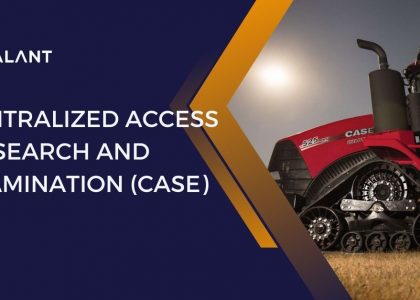In a world driven by innovation and technological advancement, the protection of intellectual property plays a pivotal role in fostering creativity and progress. The EPCT, or the Electronic Patent Cooperation Treaty, is an essential international instrument that has simplified and improved the patent application process on a global scale. In this blog, we will delve into the world of EPCT, understanding its significance, purpose, and the benefits it offers to inventors and innovators worldwide.
What is EPCT?
The Electronic Patent Cooperation Treaty, or EPCT, is a system established by the World Intellectual Property Organization (WIPO) to facilitate the filing of international patent applications. The Patent Cooperation Treaty (PCT) itself is an international agreement that simplifies the process of filing patent applications across multiple countries. The EPCT system is an electronic platform that streamlines the PCT application process, making it more efficient and accessible for applicants and patent offices around the world.
The Purpose of EPCT
The primary purpose of EPCT is to make the international patent application process more user-friendly and efficient. By providing an electronic platform, EPCT simplifies the filing of patent applications and reduces administrative burdens for both applicants and patent offices. This streamlined process encourages inventors and innovators to seek patent protection in multiple countries, promoting the dissemination of new technologies and fostering innovation on a global scale.
Key Features of EPCT
- Electronic Filing: EPCT allows applicants to file international patent applications electronically. This eliminates the need for physical paperwork and speeds up the process significantly. The system supports various file formats, making it easier for applicants to submit their documents conveniently.
- International Search: EPCT facilitates international searches of patent applications. This means that a single international search authority, chosen by the applicant, searches for relevant prior art. This simplifies the process by centralizing the search phase and provides a more comprehensive view of prior art from different countries.
- Publication and Access: EPCT ensures the timely publication of international applications, making them accessible to the public. This transparency benefits both inventors and the public, as it disseminates technical information and encourages collaboration and innovation.
- Global Reach: The EPCT system is widely accepted and used by many countries, providing inventors with access to a vast international network of patent offices. This allows applicants to seek patent protection in multiple countries without the need to navigate complex individual filing procedures.
Benefits of Using EPCT
The adoption of EPCT offers several significant advantages to inventors, innovators, and the global community as a whole.
- Efficiency: The electronic filing system simplifies the patent application process, reducing paperwork and administrative hassles. This makes it easier and quicker for applicants to secure patent protection.
- Cost-Effective: EPCT can be a cost-effective option for those looking to protect their inventions globally. By centralizing various processes, it minimizes the expenses associated with traditional filing methods.
- Global Protection: EPCT’s extensive network of participating countries ensures that your invention can be protected in multiple jurisdictions, helping you tap into a global market.
- Prior Art Search: The international search conducted through EPCT provides a comprehensive review of existing patents and technical literature. This can be immensely valuable for inventors in assessing the patentability of their inventions.
- Transparency: EPCT promotes transparency by making patent applications available to the public. This encourages innovation and collaboration, as inventors can build on each other’s work.
How to Use EPCT
Using EPCT is a straightforward process:
- Prepare Your Patent Application: Begin by drafting your patent application, ensuring that it complies with the PCT’s requirements.
- Choose an International Searching Authority (ISA): Select the ISA that will conduct the international search. This choice is essential, as the ISA will identify relevant prior art that may affect the patentability of your invention.
- File Your Application Electronically: Use the EPCT system to file your international patent application electronically. You will need to pay the required fees and follow the specific guidelines provided by WIPO.
- Publication and Search: Your application will be published, and the chosen ISA will conduct an international search to identify relevant prior art. This report will be provided to you, helping you assess the patentability of your invention.
- National Phase: After the international phase, you will need to enter the national phase, which involves filing your patent application in individual countries of interest. EPCT can help with this process by generating the necessary documentation for national filings.
Conclusion
The Electronic Patent Cooperation Treaty (EPCT) is a valuable tool for inventors and innovators looking to secure international patent protection for their inventions. By streamlining the patent application process, offering a global reach, and promoting transparency, EPCT encourages the dissemination of technology and fosters innovation on a global scale.
In a world where technology and innovation drive progress, EPCT stands as a beacon of support for inventors, simplifying the complexities of international patent applications and ensuring that the benefits of intellectual property protection are accessible to all. It is indeed a testament to the World Intellectual Property Organization’s commitment to advancing intellectual property protection on a global scale.
As technology continues to advance and innovations continue to reshape industries, EPCT remains a vital resource for those seeking to protect their intellectual property, promote innovation, and contribute to the betterment of our global community.





